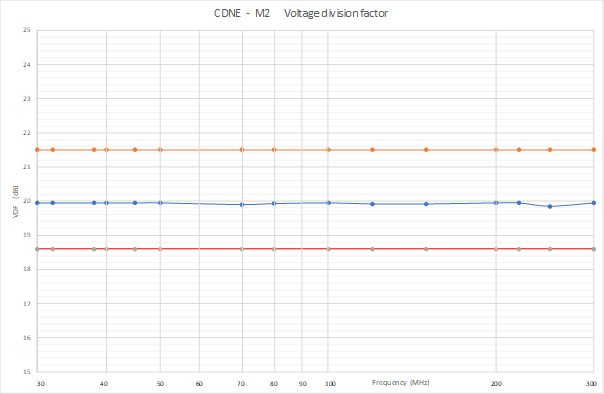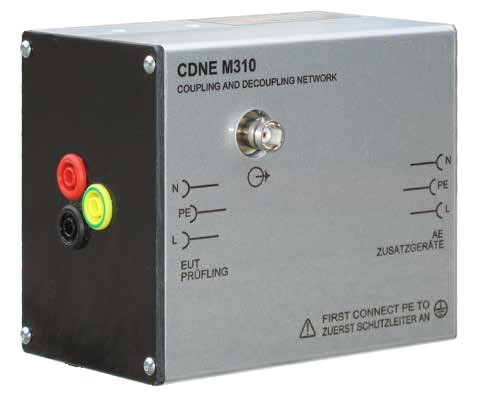CDNEs are based on the CDN as specified in IEC61000-4-6 (Conducted RF Immunity test). In this test, the CDN is used for the coupling of RF onto a cable. In principle, the CDN can be used in reverse, ie coupling any RF on the cable out to an analyser. In an earlier version of EN 55015, these CDNs were specified as suitable for measuring emissions. However, the current version of the standard specifies a CDNE which is essentially a CDN refined to deliver higher accuracy particularly at higher frequencies.
These CDNEs are not versatile, each cable type requires a specific type of CDNE:
CDNE M2 For 2 core mains cable
Frequency range: 30 MHz – 300 MHz Frequency range:
Line type: 2 unshielded mains lines
Connector for EUT and AE: 2 x 4mm safety laboratory jacks
Measurement port: 50 Ω BNC
Max. voltage line to line: 300 VDC
520 VAC 50/60 Hz
Max. current: 10 A
Max. EUT RF voltage: 140 dBμV
Max. voltage measuring port: 5 V
Ground connection: 4 mm laboratory jack and M4 screw at AE side
Dimensions W x H x D: 105 mm x 76 mm x 127 mm
Weight: ~700 g
Circuit: CISPR/A/944/CD, Fig. J2
Acc. to standard: CISPR 15/ EN 55015
CDNE M3 For 3 core mains cable
Frequency range: 30 MHz – 300 MHz Frequency range:
Line type: 3 unshielded mains lines~
Connector for EUT and AE: 3 x 4 mm safety laboratory jacks
Measurement port: 50 Ω BNC
Max. voltage line to ground: 300 V AC
Max voltage line to line: 300 VDC
520 VAC 50/60 Hz
Max. current: 10 A
Max. EUT RF voltage: 140 dBμV
Max. voltage measuring port: <10 V
Ground connection: 4 mm laboratory jack and M4 screw at AE side
Dimensions W x H x D: 104 mm x 104 mm x 127 mm
Weight: ~750 g
Circuit: CISPR/A/944/CD, Fig. J2
Acc. to standard: CISPR 15/ EN 55015











